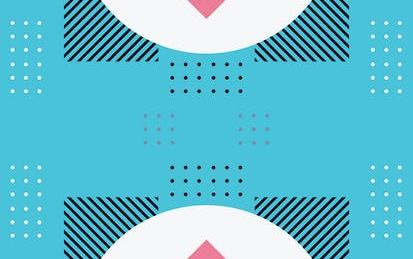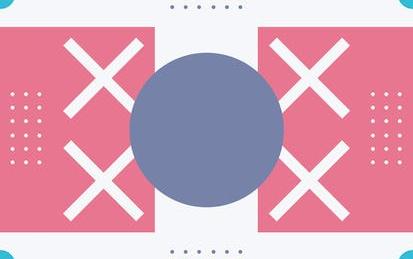

Our Courses
Interaction Design
You will learn how to design technologies that bring people joy, rather than frustration. You'll learn how to generate design ideas, techniques for quickly prototyping them, and how to use prototypes to get feedback from other stakeholders like your teammates, clients, and users. You'll also learn principles of visual design, perception, and cognition that inform effective interaction design.
-
Course by

-
 Self Paced
Self Paced
-
 English
English

Web Application Development: Basic Concepts
This is the first course in a Coursera Specialization track involving Web Application Architectures. This course will give you the basic background, terminology and fundamental concepts that you need to understand in order to build modern full stack web applications. A full stack web developer is familiar with each "layer" of the software technologies involved in a web application, including data modeling and database technologies, the web server environment and middleware components, network protocols, the user interface and basic visual design and user interaction concepts.
-
Course by

-
 Self Paced
Self Paced
-
 19 hours
19 hours
-
 English
English

Information Design
A blank canvas is full of possibility. If you have an idea for a user experience, how do you turn it into a beautiful and effective user interface? This covers covers principles of visual design so that you can effectively organize and present information with your interfaces. You'll learn concrete strategies to create user interfaces, including key lessons in typography, information architecture, layout, color, and more. You’ll learn particular issues that arise in new device contexts, such as mobile and responsive interfaces.
-
Course by

-
 Self Paced
Self Paced
-
 14 hours
14 hours
-
 English
English

Designing User Interfaces and Experiences (UI/UX)
UI and UX design is a thriving industry with numerous prospects for anyone with the right skills. This course is designed for those who are interested in starting a career in designing UI and UX experiences as well as developers who want to create web and front-end applications. It emphasizes the key concepts, tools, and methodologies used in front-end development. Web and mobile-accessible devices are transforming the world. Nowadays, everyone has a smartphone, tablet, smart TV, and/or laptop, which they use for communication and data searching.
-
Course by

-
 Self Paced
Self Paced
-
 17 hours
17 hours
-
 English
English

Low Poly Art For Video Games
This course is aimed to give you the tools and knowledge you need to start creating simple 3D art for video games made in the Unity game engine. Through the aesthetic of pixel art we will explore artistic principals like shape language, color theory, and composition as well as show you a step by step workflow for creating assets that you can use to make your own games. The course is broken into 4 main modules, props, environments, characters, and animation.
-
Course by

-
 Self Paced
Self Paced
-
 17 hours
17 hours
-
 English
English

Create High-Fidelity Designs and Prototypes in Figma
Create High-Fidelity Designs and Prototypes in Figma is the fifth course in a certificate program that will equip you with the skills you need to apply to entry-level jobs in user experience (UX) design. In this course, you will follow step-by-step tutorials to learn how to create high-fidelity designs, called mockups, in Figma, a popular design tool. Then, you’ll turn those designs into an interactive prototype that works like a finished product. You’ll conduct research to collect feedback about your designs and make improvements.
-
Course by

-
 Self Paced
Self Paced
-
 69 hours
69 hours
-
 English
English
Pixel Art for Video Games
This course is aimed to give you the tools and knowledge you need to start creating simple art for video games made in the Unity game engine. Through the aesthetic of pixel art we will explore artistic principals like shape language, color theory, and composition as well as show you a step by step workflow for creating assets that you can use to make your own games. The course is broken into 4 main modules, props, environments, characters, and animation.
-
Course by

-
 Self Paced
Self Paced
-
 9 hours
9 hours
-
 English
English

UX Design: From Concept to Prototype
Great design doesn’t come out of nowhere; it is born, nurtured, and grown--all through a systematic, learnable process. In this UX course, you will explore the process of taking a basic concept, grounded in user needs, and developing it into a design that will address those needs. In the course, you will gain hands-on experience with techniques such as sketching, scenario development, storyboarding, and wireframing that will help you transform your understanding of what your users need into a compelling user experience.
-
Course by

-
 Self Paced
Self Paced
-
 15 hours
15 hours
-
 English
English
Interaction Design Capstone Project
Apply the skills you learned during the sequence of courses -- from needfinding to visual design -- as you redesign a new interface, service, or product for your Interaction Design Capstone Project. We’re working with some exciting design teams in Silicon Valley across multiple industries to develop real-world design challenges for this final project. Upon completion, you will have a polished capstone project you can share in your design portfolio to highlight your work and document your design process.
-
Course by

-
 Self Paced
Self Paced
-
 36 hours
36 hours
-
 English
English
Design Principles: an Introduction
What makes an interface intuitive? How can I tell whether one design works better than another? This course will teach you fundamental principles of design and how to effectively evaluate your work with users. You'll learn fundamental principles of visual design so that you can effectively organize and present information with your interfaces. You'll learn principles of perception and cognition that inform effective interaction design. And you'll learn how to perform and analyze controlled experiments online. In many cases, we'll use Web design as the anchoring domain.
-
Course by

-
 Self Paced
Self Paced
-
 13 hours
13 hours
-
 English
English

Web Design: Wireframes to Prototypes
This course is focused on the application of the early UX research to actual user interfaces: the creation of wireframes, high-fidelity mockups, and clickable prototypes.
-
Course by

-
 Self Paced
Self Paced
-
 41 hours
41 hours
-
 English
English

Web Design: Strategy and Information Architecture
This course is focused on the early user experience (UX) challenges of research, planning, setting goals, understanding the user, structuring content, and developing interactive sequences. While the concepts covered will translate to many kinds of interactive media (apps, digital kiosks, games), our primary focus will be on designing contemporary, responsive websites.
-
Course by

-
 Self Paced
Self Paced
-
 12 hours
12 hours
-
 English
English

UX Design Fundamentals
This hands-on course examines how content is organized and structured to create an experience for a user, and what role the designer plays in creating and shaping user experience. You will be led through a condensed process that acts as a roadmap for developing robust UI/UX design: from ideation and sitemapping, to the creation of paper and digital prototypes.
-
Course by

-
 Self Paced
Self Paced
-
 13 hours
13 hours
-
 English
English

Visual Elements of User Interface Design
This design-centric course examines the broad question of what an interface is and what role a designer plays in creating a user interface. Learning how to design and articulate meaning using color, type, and imagery is essential to making interfaces function clearly and seamlessly. Through a series of lectures and visual exercises, you will focus on the many individual elements and components that make up the skillset of an interface designer.
-
Course by

-
 Self Paced
Self Paced
-
 16 hours
16 hours
-
 English
English



